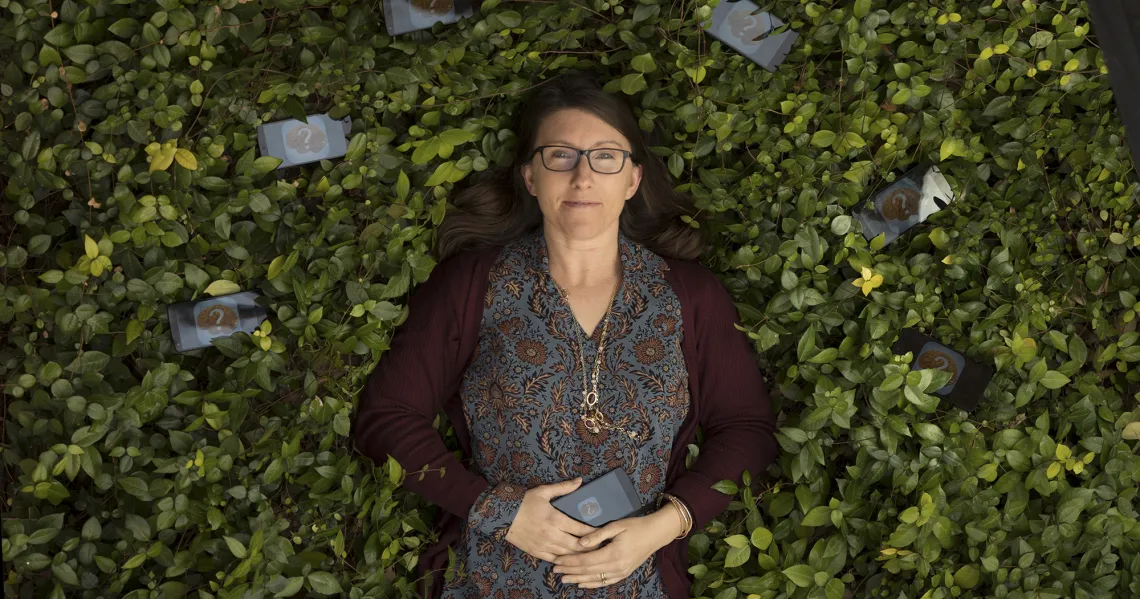Fitness Tracker for Your Mind
Inside our thoughts and emotions

Jessica Andrews-Hanna, an assistant professor in the Department of Psychology and the Cognitive Science Program and director of the UA Neuroscience of Emotion and Thought Laboratory
Take a moment to reflect on the landscape of your inner mental experience — the thoughts, feelings and emotions that have shaped you into the person you are today.
What do you think about on a day-to-day basis? Are your thoughts a source of happiness, creativity and inspiration? Or do they fuel distress, anxiety and distraction?
Despite its importance for our cognitive and mental well-being, the nature of daily thinking remains a mystery, largely because thoughts are hidden and difficult to study.
The Neuroscience of Emotion and Thought Lab at the University of Arizona, together with researchers at the University of Colorado, is trying to fill this gap in our scientific understanding of the mind by taking advantage of smartphone technology. They recently developed a free mobile Android app called Where’s My Mind? that sends users surveys at random moments to capture the nature of their mental experience.
Here’s how it works:
After downloading the app, users are provided details about the research study. Next, they are asked to answer questions assessing their demographic characteristics and aspects of their personality, goals and well-being.
These questions will give the researchers a better sense of who is using the app and reveal how daily thinking patterns differ across people.
Following these questions, the app helps users track their thoughts over time. It does so by sending the user’s device a push notification four random times each day during specified waking hours.
Users can choose to ignore the push or answer a short survey about the nature of their thoughts, mood and activities right before they received the notification.
After completing roughly a week of thought surveys, the app will show users helpful graphs of their daily thought patterns, and users can choose to see how their thoughts compare with the average user. The graphs will be updated as users continue to use the app and as the database grows.
The researchers are building a large, anonymous international database of daily thinking patterns and are excited to already have over 1,000 international users.
As the database grows, they are starting to gain important insight into the Four C’s of thinking:
- Content. What do people typically think about in day-to-day life?
- Context. How do thoughts typically change as a function of what people are doing, such as working or procrastinating?
- Correlates. How do thoughts differ across people of different ages, cultures and outlook on life? How do thoughts relate to mental health, including depression and anxiety?
- Consequences. Are certain types of thoughts helpful or harmful for our cognitive and emotional well-being?
One class of thoughts the researchers are trying to understand is often called “mind-wandering.” We all have the experience of mind-wandering, but we do so in different ways and with different consequences.
The researchers want to understand both the costs and benefits of mind-wandering. A large user database will be critical to answering these questions.
